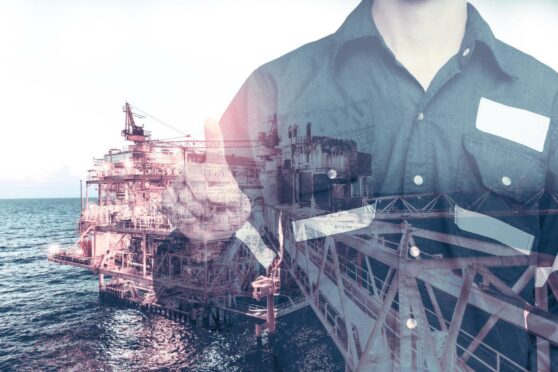A cluster of multi-million pound data-driven projects being led by the Net Zero Technology Centre (NZTC) will lead to new jobs being created.
One of the main focuses will be the creation of a new industrial RAS (robotics and autonomous systems) centre in Scotland – with “intent” for its location to be based in the north-east.
The proposed robotics facility is part of the offshore low touch energy and autonomous systems (Olter) programme, which is one of seven projects being led by NZTC and backed by the Scottish Government through its £62m energy transition fund (ETF)
Olter has received £4.5milion of ETF funding, match-funded by a further £9.6m from industry. The 36-month project will take place across two phases over three years.
The aim is to build a best-in-class offshore industrial RAS centre in Scotland, focused on supporting the energy transition and positioning the country as an international leader in deploying robotic technologies for the offshore energy sector.
Stephen Ashley, NZTC head of offshore energy 4.0, is the man leading the data projects.
He said: “The centre will be set up in the best place for Scotland but the intent is the north-east. Currently that’s the ambition.
“We’ll set something up on a virtual basis to begin with and the idea is in further phases we’ll create an actual physical centre.
“We’ll purchase some robots and we are trying to set up various data hubs and a whole eco system around creating robotic systems.
“It will lead to creating new types of jobs that don’t really exist today around things such as robotics and autonomous systems.
“We’ll see the use of robotics and autonomous systems in many other sectors so it’s a very transferrable skill.”
Some of the new jobs to be created include robotics manager, engineer, operators and maintenance technicians.
Making data more accessible
Another initiative will focus on offshore manning optimisation (OMO), which will serve as a “lighthouse project” that it is hoped will equip the wider industry with the tools, technology, techniques and approaches required to enable more workers to remain onshore through the use of remote operations technology.
During the 30-month duration, the scheme will receive £2.45m of ETF funding, match-funded by industry to £4.9m.
Mr Ashley said: “This is about new ways of working and focused on new job skills. Maintaining jobs in the industry means moving some of the jobs from offshore and ensuring the ones that remain offshore are supported by expertise from the beach, but also the use of robotics and automation.
“A lot of the projects we’ve done in the last four years have all been focused on the technology but they haven’t been pulled together.
“The idea of OMO is to put it all together and take one or two brownfield assets and apply these technologies so they can reduce emissions.”
The final two projects are the offshore energy digital architecture (OEDA) and data for net zero (D4NZ).
D4NZ is a three-year project earmarked to receive £2.5m of ETF funding, match-funded to £5.3m by industry. OEDA will receive £425,000 matched to £850,000.

Both are designed to make data more accessible.
For Mr Ashley it’s an exciting time to be involved in the world of data in the energy sector.
He said: “For me the energy transition is the challenge of our time.
“I know we get a bad rap sometimes in the oil or energy industry but I really believe we are fundamental to solving the problem.
“I’m also a big champion on the use of data and for the industry to collaborate much more than they do today around the use of data.
“I think in the future of the energy system as a whole will be much more challenging and integrated, flexible and data is fundamental in solving that.”
What is the net zero technology transition programme
The NZTC was awarded £16.5m to develop seven schemes through its net zero technology transition programme (NZTTP) , which it claims could deliver £403 billion for the economy and 21,000 jobs by 2050.
With industry agreeing to more than match that level of funding, a total of £34 million will be invested in projects aimed at “transforming the North Sea energy system” and delivering a net-zero future.
NZTC was originally founded in 2016-17 as the Oil and Gas Technology Centre, backed with £180 million worth of Aberdeen City Region Deal funding over 10 years.

